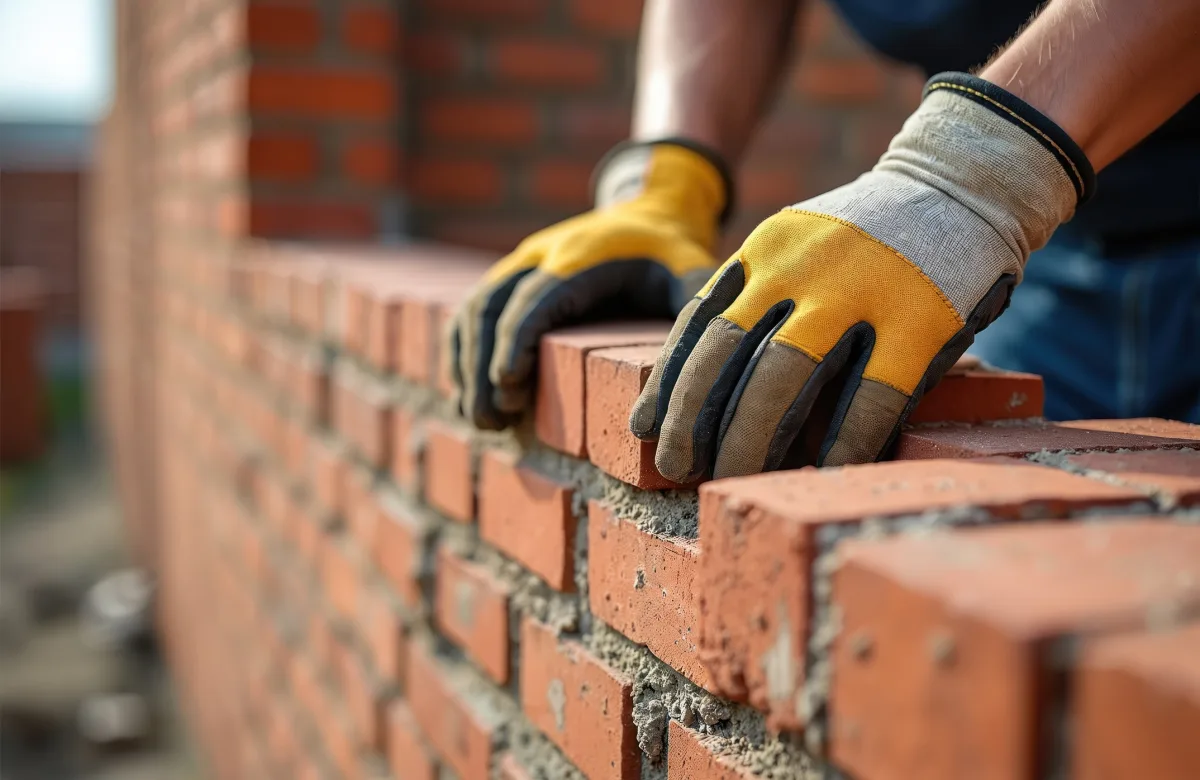Smartphones are assembled by robots. Cars roll off automated production lines. AI is increasingly being used to assist in the reading and interpretation of MRI scans. Autonomous tractors navigate fields using GPS. In finance, high-frequency trading algorithms execute millions of transactions per second.
Yet a construction worker from half a century ago would find little on a modern building site they found unfamiliar. Construction, accounting for roughly 13 per cent of global GDP, is perhaps the last great bastion of industrial-age thinking in a digital world.
As a consequence, productivity is falling. Raw US Bureau of Economic Analysis (BEA) data suggest that value added per worker in America’s construction sector was about 40 per cent lower in 2020 than in 1970, whilst productivity in the wider economy doubled.
Over two decades, labour productivity growth in construction has averaged just one per cent annually, against 2.8 per cent for the global economy and 3.6 per cent for manufacturing. This represents trillions in lost economic output.
A crisis of supply and demand
The productivity malaise has collided with an unprecedented global housing crisis. Three billion people could lack adequate housing by 2030, says the UN. American housing affordability plunged from about 150 in 2021 to the mid-80s by 2024. British affordability fell from 105 to the low 70s over the same period (a housing affordability index reading above 100 indicates more affordable housing; lower values signal less affordability).
When teachers, nurses and other essential workers cannot afford to live where they work, urban prosperity weakens. Cities risk becoming enclaves of wealth surrounded by zones of exclusion—hardly conducive to economic dynamism.
The industry’s response to surging demand has been sluggish. Almost half of construction executives reported declining productivity in 2023, whilst a third saw stagnation. Meanwhile, 41 per cent of America’s construction workforce is expected to retire by 2031.
Much blame lies with regulatory constraints that proliferated from the 1970s onwards. Local land use and environmental regulations expanded precisely when construction productivity began its long decline. Areas with stricter land use regulations have smaller, less productive construction firms and reduced building activity.
These well-intentioned rules create perverse incentives favouring smaller, less efficient projects. Regulatory barriers can inflate new home costs by up to 41 per cent for multifamily developments. As projects fragment, innovation suffers. Patent activity in construction has lagged the broader economy since the 1970s.
Digital transformation awaits
Construction’s technological backwardness is almost comically complete. McKinsey estimates it is the least digitised major sector worldwide—and by some distance. This represents an extraordinary opportunity for entrepreneurs willing to challenge entrenched practices.
Consider additive manufacturing. The global 3D printing construction market was worth just 53.9 million US dollars in 2024 but is projected to grow at 111.3 per cent annually through 2030. Early projects demonstrate remarkable efficiency: housing modules produced in 200 hours whilst consuming just six kilowatts of energy and reducing waste almost entirely.
Modular construction offers similarly compelling economics. The global market is projected to grow from 91 billion US dollars in 2022 to 120.4 billion US dollars by 2027.
These prefabricated approaches can deliver buildings 20-30 per cent cheaper than conventional methods.
The reinvention imperative
Technological possibility, regulatory pressure and market demand are converging. Some 92 per cent of construction companies now use or intend to use artificial intelligence. The Internet of Things promises to transform job sites into data-rich environments where embedded sensors turn modules into intelligent entities.
Building Information Modelling is revolutionising project planning. The global building information modelling (BIM) market is worth eight billion US dollars and projected to reach 15 billion US dollars by 2027. These digital twins enable virtual construction before physical building begins, identifying problems whilst they remain pixels rather than expensive mistakes.
Yet transformation faces formidable obstacles. The industry’s fragmented structure—dominated by small, locally-focused firms—militates against meaningful R&D investment. Cultural resistance runs deep in an industry that prizes craft knowledge over systematic innovation.
Regulatory frameworks remain stubbornly analogue. Professional liability concerns create disincentives for experimentation. Margin pressure hinders firms’ ability to invest in improvement. Thin margins and project-based business models leave little room for patient capital.
The opportunity
Despite these barriers, change is accelerating. The housing crisis has reached such proportions that even conservative policymakers embrace radical solutions. Government agencies and private companies are collaborating on nontraditional housing production including modular and 3D-printed buildings.
The workforce crisis may prove catalytic. Labour shortages make traditional methods economically unviable. America’s construction industry needs an estimated 501,000 additional workers in 2024—a gap that cannot be filled through conventional recruitment.
Capital markets are waking up. Venture investment in construction technology has surged. Established players like Saint-Gobain have acquired stakes in 3D concrete printing companies, signalling mainstream acceptance.
Challenges remain. Current 3D printers often have size limitations hindering large-scale projects. Technical questions around structural integrity require resolution. The trajectory, however, is clear.
Construction faces existential pressure to transform. Firms that recognise this imperative will capture extraordinary value from one of the world’s largest and most hidebound sectors. Those clinging to traditional methods may find themselves as obsolete as the horse-drawn carts that once delivered building materials to urban construction sites.
The question is not whether construction will be reinvented, but who will lead that reinvention—and who will be buried beneath its rubble.
Photo: Dreamstime.







